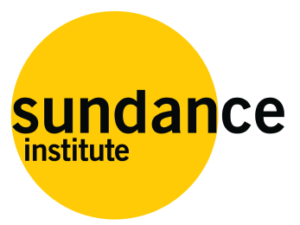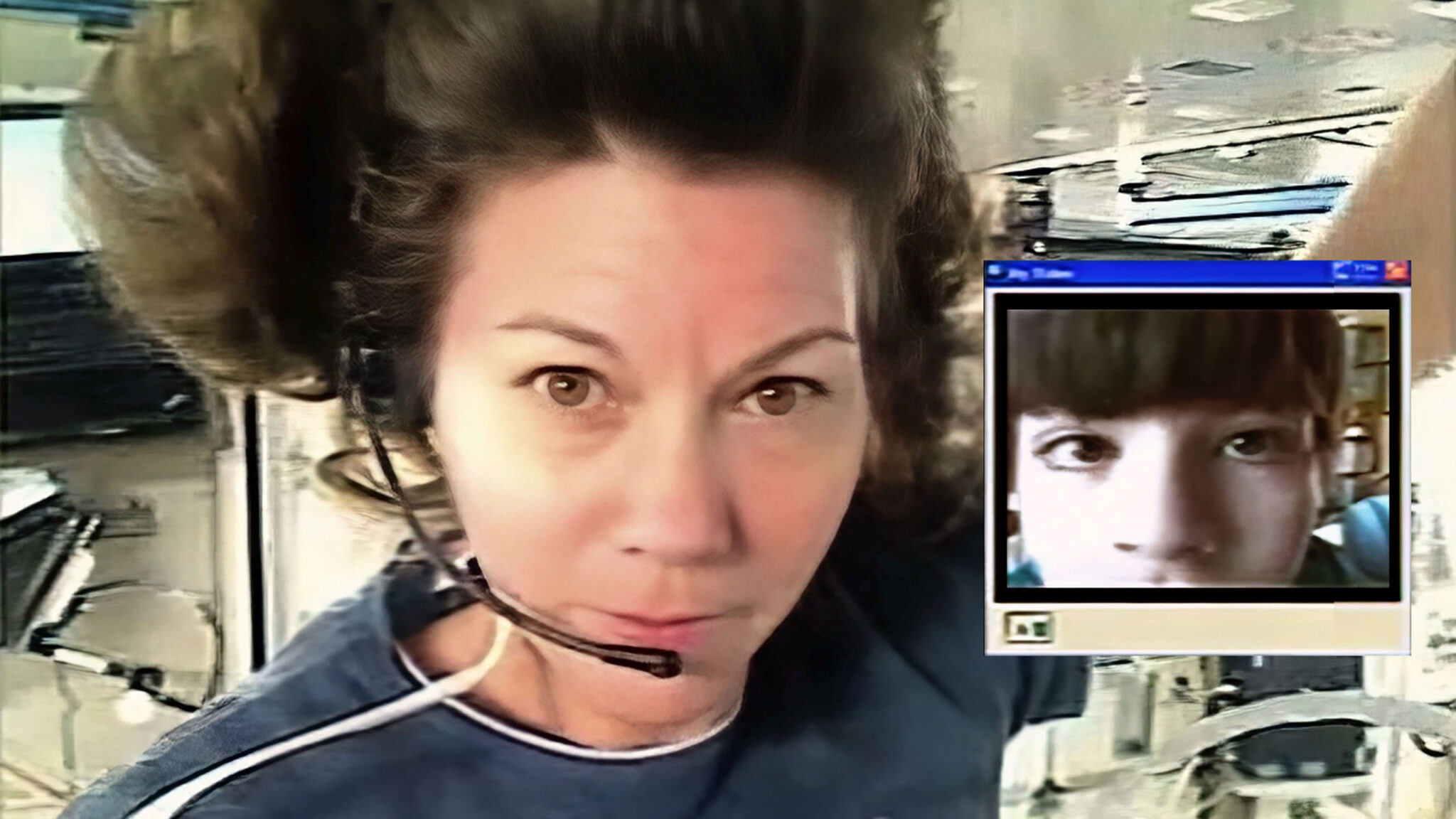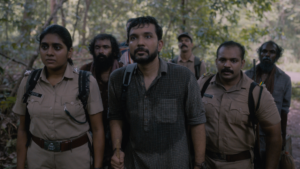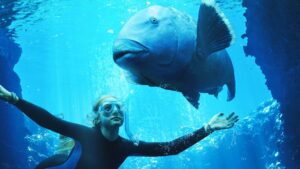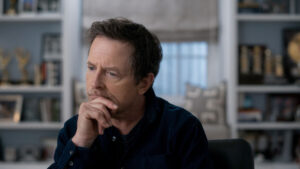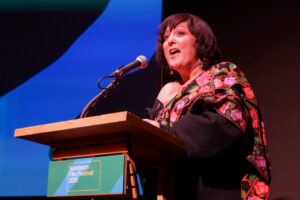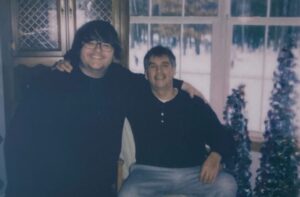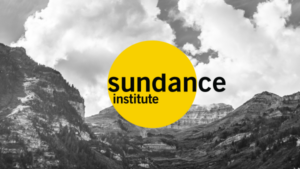One of the most exciting things about starting each year with the Sundance Film Festival is having a front-row seat for the bright future of independent filmmaking. Captivating stories, soon-to-be iconic shots, and timely cinematic conversations are all cornerstones of the 2023 Festival slate — and those are all birthed from the hearts and souls of these filmmakers. That means that this year we have the privilege of being introduced (or reintroduced for returning filmmakers) to the artists behind 111 features, 64 shorts, and four indie episodic projects.
And while we learn a lot from the art that these storytellers share with us, there’s always more we can learn about these filmmakers as people. This year we decided to get to the bottom of those artistic wells with our Backstory questionnaire!
“This might sound over the top… but this movie is for anyone who’s ever felt isolated, or torn between the need to forge a new life away from home, and the pull of loved ones and roots,” says Ido Mizrahy, when asked who he wants his newest film The Longest Goodbye to reach. The filmmaker behind the World Cinema Documentary Competition title following a senior NASA psychologist (Dr. Al Holland) whose research focuses on the “prolonged separation of individuals from Earth” knows that while his film is focused on the possibility of Mars exploration, it’s really about humanity. “This story is so much about this human conflict that so many of us, including myself, have experienced and continue to experience.”
Mizrahy’s deep level of self-awareness isn’t just confined to his inspired doc about “the conflict between our need for connectivity and the urge to explore the unknown,” he’s honest about himself as well: “I so want to say [that I’m a] night owl, but early bird.”
And while viewers will probably find themselves looking inward at the end of the film, the writer-producer-director still wants you to look into the night sky. “And, of course, [this film is for] all space lovers!” he says. “But they’re in for a very different kind of space movie.”
Below, find out about the inspirations for The Longest Goodbye, the biggest challenges Mizrahy faced in production for this first-time Sundance Fest film, and the three things he always has in his fridge.
What was the biggest inspiration behind this film?
I’m inspired by films that transform a space exploration story into a potent, sneaky metaphor about our terrestrial questions. 2001[:A Space Odyssey], Solaris, Moon, Gravity, Arrival, [and] Alien come to mind. They use this enticing piece of story bribe (what’s more exciting than outer space…?) to help us ask questions about our everyday existence. Questions that when faced head on, undisguised, can be too painful to stomach.
Another bit of inspiration, that’s unrelated to films, has to do with the role space exploration played in people’s lives in its heyday: when the race to the moon was peaking in the late ’60s and everyone was so focused on who will make it there first and realizing the dream of seeing humans walk on another planet. Hannah Arendt asked — and I’m totally paraphrasing here — Shouldn’t we ask ourselves why humans are so obsessed with getting out of Earth? Going as far as we possibly can, can also mean we’re running away from something. Or at the very least leaving something behind that might continue to haunt us wherever we go.
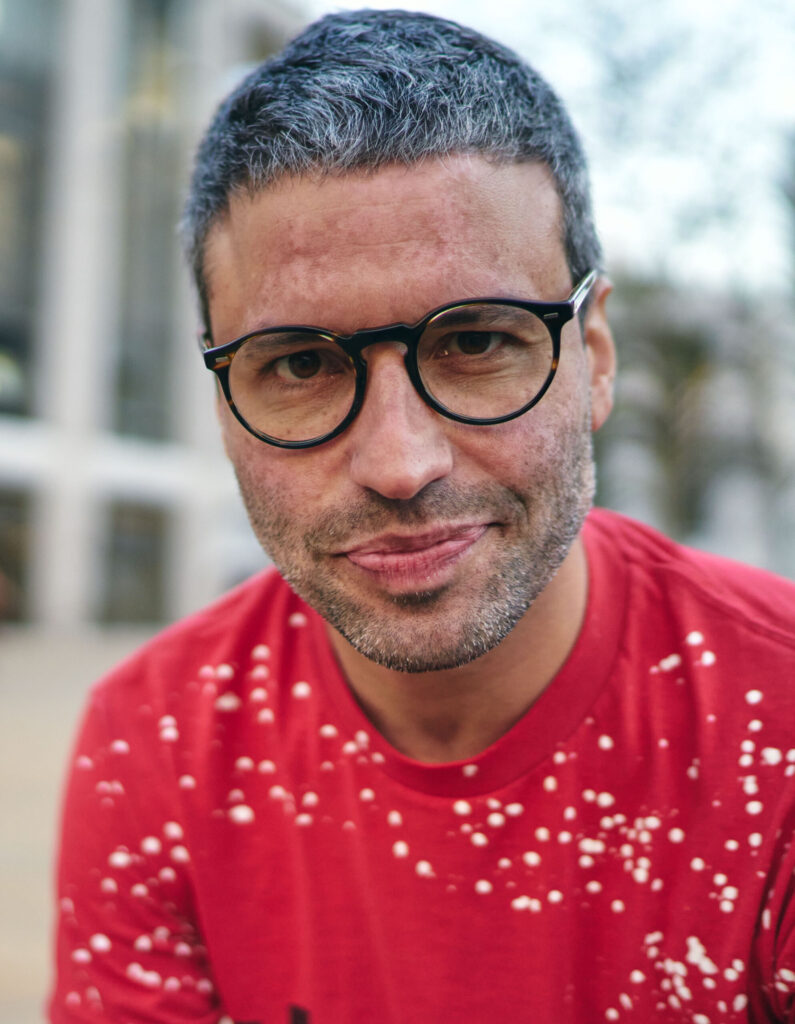
Why does The Longest Goodbye need to be told now?
This story is a meeting place between space exploration and one of our most pressing terrestrial human conflicts. Space exploration continues to fascinate us and offer a sense of escape and wonder. It’s a powerful thing that unites all of us. But, on a more earthly plain, this story opens a window into a threat we’ve been facing in the past three years, and many of us long before: having to isolate from the closest people to us, confined to our homes or temporary ones, and — for the first time for many of us — having to ask ourselves what our social contacts mean to us.
How much of our mental well-being is supported by contact with our loved ones? The answer can be surprising at times. And for me, I’ll admit that while I missed the physical contact with loved ones pretty terribly at the beginning of the pandemic, when it was finally time to get back to seeing people in person, I dreaded it. And it wasn’t even the fear of catching anything, it was this strange new feeling of not wanting to be around people. Of needing to get back to my isolation. There was a sense of comfort in that aloneness, that was suddenly gone. I think our complex relationship with the idea of being isolated is really worth exploring.
Your favorite part of making the film? Memories from the process?
Working in collaboration with my long time close friend, Nir Sa’ar, who wrote and produced this film with me has been so fulfilling and fruitful. A very joyous collaboration.
As for favorite moments, I would say there were two: The first moment is when I interviewed Kayla Barron while she was in space. It was the closest I ever got to being in space, even if it was only my voice. I was so over-excited when Houston’s mission control patched me in, I couldn’t believe it was really happening. Another wonderful moment was when Cady Coleman shared about 50 hours of her family conferences from the space station — basically every video conversation she had with her family during those six months she was in space. Trusting me with this incredibly personal archive moved me beyond words. I watched all 50 hours, mesmerized by the real life human drama unfolding on my computer screen. They’re an incredible family.
What was a big challenge you faced while making this film?
Getting NASA to approve and then open certain doors to us was a new challenge. The folks who oversee public affairs at NASA HQ are very experienced people who get literally thousands of requests every year. To get their stamp of approval forced us to focus our message and button up our prep to a whole new level. We owe them a lot, both for opening their doors to us, and forcing us to be better filmmakers.
Tell us why and how you got into filmmaking. Why do you do it?
I love putting stories together — especially docs — where you work in this space between your idea of what the story should be and what ends up transpiring in reality, which is never exactly what you had in mind. It’s this great push-pull between being strategic and being tactical. It’s very exciting.
Why is filmmaking important to you?
Because we’re most honest when we make a movie. We work so hard on crafting the story and adding layers of visual and audible aesthetics, only to eventually reveal something to the world that is so naked and telling — both of what and who we were telling the story about and about ourselves. We can’t hide when we tell a story. Our POV is who we are.
If you weren’t a filmmaker, what would you be doing?
I would be a psychologist, or an architect. For a moment I thought I would be an inventor, but I couldn’t invent anything.
What is something that all filmmakers should keep in mind in order to become better cinematic storytellers?
Don’t worry about the composition. Don’t worry about the lighting. Focus on the story you’re trying to tell and what’s in front of you and suddenly your shots will start looking pretty great. Intention and point of view are everything. Having a great cinematographer doesn’t hurt either.
What three things do you always have in your refrigerator?
Pickles, other kinds of pickles, beer.
What’s the last book you read?
Blood Meridian by Cormac McCarthy.
One thing people don’t know about me is _____
I’m painfully ticklish.
What’s your favorite film that has come from the Sundance Institute or Festival?
Most recently I would say Mass. Just incredible.
